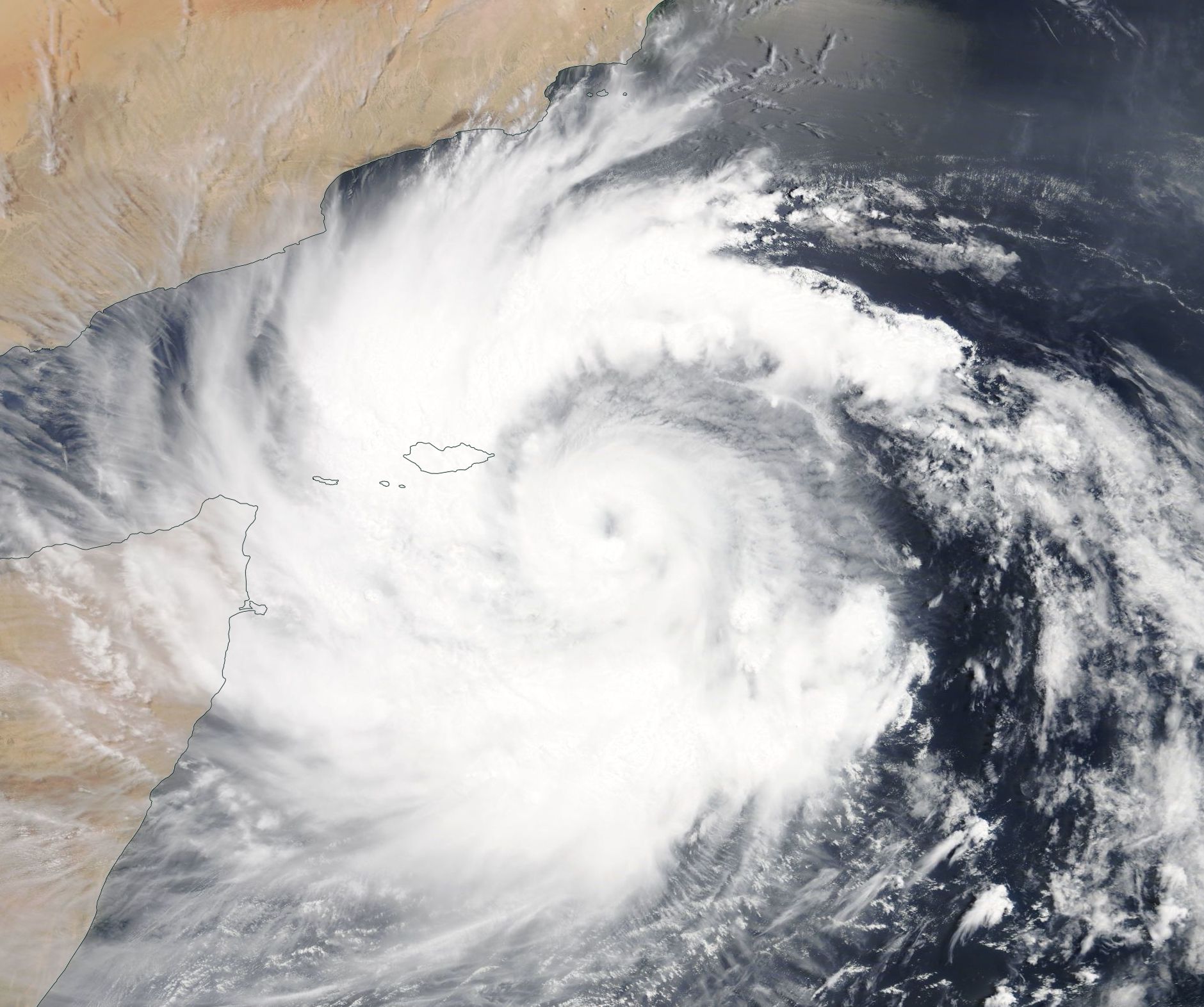Welcome to DU!
The truly grassroots left-of-center political community where regular people, not algorithms, drive the discussions and set the standards.
Join the community:
Create a free account
Support DU (and get rid of ads!):
Become a Star Member
Latest Breaking News
General Discussion
The DU Lounge
All Forums
Issue Forums
Culture Forums
Alliance Forums
Region Forums
Support Forums
Help & Search
Environment & Energy
Related: About this forum2 Tropical Storms In Arabian Sea Are The Farthest West In Meteorological Records
This year, two tropical cyclones have sprung up in the Western Arabian Sea. A region where, according to our understanding of climate, “storms do not form.” Well, the climate has clearly changed. Because a storm is raging there now. And for Oman today, these changes bring with them serious threats to life and property.
(Discussion of how climate change has altered tropical cyclone formation and intensity dynamics in the Western Arabian Sea during 2018.)
About five days ago, tropical storm Sagar formed east of Somalia in the Western Arabian Sea near the Gulf of Yemen. The storm was notable due to the fact that it was the furthest west a storm had ever formed in this region, according to records. The storm then dumped copious amounts of rainfall over Somalia — resulting in the loss of 34 lives.
Just a few days later, a second storm, Mekunu formed in about the same region. Tracking north, it is now threatening Oman with the potential to hit category 2 intensity. Unlike Sagar, Mekunu poses a triple threat due to expected very heavy rainfall, large waves, and storm surge.
 ?w=600&h=502
?w=600&h=502
(Mekunu rages south of Oman and Yemen after forming in the Western Arabian Sea. Image source: NASA.)s.jpg?w=600&h=502
The region near Salalah Oman that the storm is barreling toward — typically receives just five inches of rainfall per year. But Mekunu could deliver two to five times that amount (or more) in just a few days. Moreover, the flat coastal plain is backed by mountainous terrain to the north. The higher land produces lift that will intensify expected rainfall. And current models predict that more than two feet of water (24 inches) could fall on up-sloping regions facing Mekunu’s advance. What’s notable is that these totals keep rising and that peak local totals for the storm in the NOAA NCEP model show some ridiculous amounts — up to 74 inches (see below).
Why are peaks in this model so high? First, sea surface temperatures are very extreme throughout the region. In the immediate vicinity of Mekunu, ocean surfaces range from 30 to 32 degrees Celsius. The waters are about 1 to 2 C above normal and are thus providing Mekunu with a lot more moisture than is typical. However, the larger environment that Mekunu is feeding off of also has much higher than typical moisture loads. For one, sea surfaces east of Somalia have spiked to as much as 5 C above average recently — pumping out great loads of evaporation. Further, moisture levels over the Arabian Peninsula are high due to moisture streaming in along a rather intense subtropical Jet Stream moving over the also much warmer than normal sea surfaces in the Med. The result is a much higher than normal rainfall potential.
EDIT
https://robertscribbler.com/2018/05/24/odd-and-dangerous-mekunu-bears-down-on-oman/#comments
InfoView thread info, including edit history
TrashPut this thread in your Trash Can (My DU » Trash Can)
BookmarkAdd this thread to your Bookmarks (My DU » Bookmarks)
1 replies, 949 views
ShareGet links to this post and/or share on social media
AlertAlert this post for a rule violation
PowersThere are no powers you can use on this post
EditCannot edit other people's posts
ReplyReply to this post
EditCannot edit other people's posts
Rec (7)
ReplyReply to this post
1 replies
 = new reply since forum marked as read
Highlight:
NoneDon't highlight anything
5 newestHighlight 5 most recent replies
= new reply since forum marked as read
Highlight:
NoneDon't highlight anything
5 newestHighlight 5 most recent replies
2 Tropical Storms In Arabian Sea Are The Farthest West In Meteorological Records (Original Post)
hatrack
May 2018
OP
pscot
(21,024 posts)1. Al Jazeera has some videos up
https://www.aljazeera.com/news/2018/05/cyclone-mekunu-oman-braced-massive-storm-180526093621636.html
Cyclone Mekunu has made landfall in Oman, bringing strong winds and torrential rains on to the southeastern corner of the Arabian peninsula.
A 12-year-old girl was the sixth casualty of the storm, as it hit the coastal city of Salalah with winds of up to 115 miles per hour.
Thousands of Omanis have sought shelter on higher ground and in hotels reinforced with flood defence measures.
At least five other people were killed when the storm devastated the Yemeni island of Socotra on Thursday, with dozens of others missing.
Cyclone Mekunu has made landfall in Oman, bringing strong winds and torrential rains on to the southeastern corner of the Arabian peninsula.
A 12-year-old girl was the sixth casualty of the storm, as it hit the coastal city of Salalah with winds of up to 115 miles per hour.
Thousands of Omanis have sought shelter on higher ground and in hotels reinforced with flood defence measures.
At least five other people were killed when the storm devastated the Yemeni island of Socotra on Thursday, with dozens of others missing.